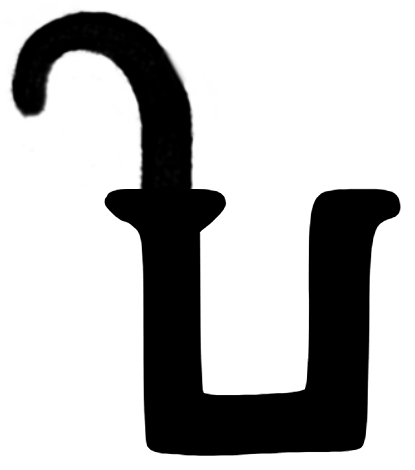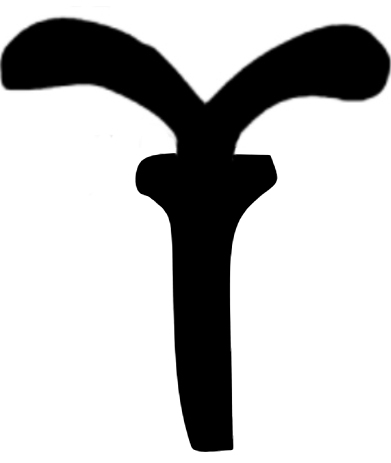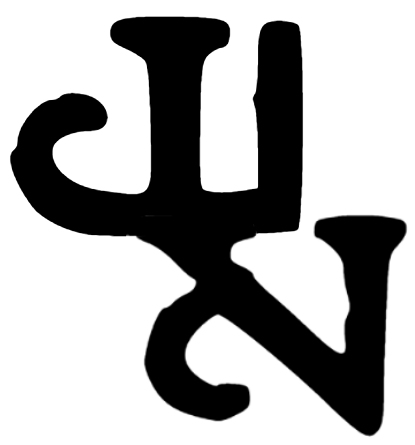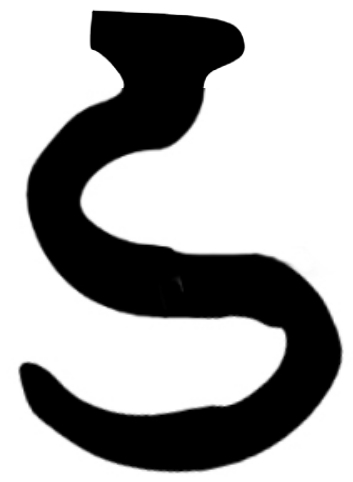Gadahara on:
[Wikipedia]
[Google]
[Amazon]
Gadahara (


 ''Ga- ḍa-ha-ra''), sometimes Gadakhara (
''Ga- ḍa-ha-ra''), sometimes Gadakhara (


 ''Ga- ḍa-kha-ra''), is a name appearing on numerous coins at the end of the
''Ga- ḍa-kha-ra''), is a name appearing on numerous coins at the end of the 


 ''Ga-ḍa-ha-ra'' appears vertically as a monogram in the right field of the coins. Then several name appear under the arm of the ruler, including Yasada, Piroz, Kirada and Samudragupta.
It is not known with certainty whether Gadahara is actually the name of a ruler, or a clan, or a geographical region, although modern scholarship considers it is indeed the region of
''Ga-ḍa-ha-ra'' appears vertically as a monogram in the right field of the coins. Then several name appear under the arm of the ruler, including Yasada, Piroz, Kirada and Samudragupta.
It is not known with certainty whether Gadahara is actually the name of a ruler, or a clan, or a geographical region, although modern scholarship considers it is indeed the region of 

 ''Pi-ro-ysa'') or the
''Pi-ro-ysa'') or the 

 ''Samudra'') may suggest some kind of suzerainty at a time when the remnants of Kushan power were torn between these two powers.
The Gadahara coins may be the last of the Kushan coins before the invasion of the Kidarites. But it is often thought that these coin actually were issued by the
''Samudra'') may suggest some kind of suzerainty at a time when the remnants of Kushan power were torn between these two powers.
The Gadahara coins may be the last of the Kushan coins before the invasion of the Kidarites. But it is often thought that these coin actually were issued by the
File:HUNNIC TRIBES, Kidarites Kirada Circa 340-345.jpg, Another "Gadahara" coin, with the name "

 ) as a vertical monogram under the arm of the King.
File:Gadakhara Samudra coin Circa CE 350-375.jpg, "Gadakhara" coin with the name of the
) as a vertical monogram under the arm of the King.
File:Gadakhara Samudra coin Circa CE 350-375.jpg, "Gadakhara" coin with the name of the 

 ''Samudra'') under the arm of the king. Circa 350-375 CE.
''Samudra'') under the arm of the king. Circa 350-375 CE.
Brahmi
Brahmi (; ; ISO 15919, ISO: ''Brāhmī'') is a writing system of ancient South Asia. "Until the late nineteenth century, the script of the Aśokan (non-Kharosthi) inscriptions and its immediate derivatives was referred to by various names such ...
: Brahmi
Brahmi (; ; ISO 15919, ISO: ''Brāhmī'') is a writing system of ancient South Asia. "Until the late nineteenth century, the script of the Aśokan (non-Kharosthi) inscriptions and its immediate derivatives was referred to by various names such ...
: Kushan Empire
The Kushan Empire ( grc, Βασιλεία Κοσσανῶν; xbc, Κυϸανο, ; sa, कुषाण वंश; Brahmi: , '; BHS: ; xpr, 𐭊𐭅𐭔𐭍 𐭇𐭔𐭕𐭓, ; zh, 貴霜 ) was a syncretic empire, formed by the Yuezhi, i ...
or the beginning of the rule of the Kidarite Huns in the area of Central and Western Punjab
Punjab (; Punjabi: پنجاب ; ਪੰਜਾਬ ; ; also romanised as ''Panjāb'' or ''Panj-Āb'') is a geopolitical, cultural, and historical region in South Asia, specifically in the northern part of the Indian subcontinent, comprising ...
in India
India, officially the Republic of India (Hindi: ), is a country in South Asia. It is the seventh-largest country by area, the second-most populous country, and the most populous democracy in the world. Bounded by the Indian Ocean on the so ...
, in the period circa 350-375 CE.
The name Gandhara
Gandhāra is the name of an ancient region located in the northwestern region of the Indian subcontinent, more precisely in present-day north-west Pakistan and parts of south-east Afghanistan. The region centered around the Peshawar Vall ...
.
The appearance of the names of foreign rulers such as the Kushano-Sassanian
Kushano-Sasanian Kingdom (also called Kushanshahs, KΟÞANΟ ÞAΟ ''or Koshano Shao'' in Bactrian, or Indo-Sasanians) is a historiographic term used by modern scholars to refer to a branch of the Sasanian Persians who established their rule in ...
Piroz (

 ''Pi-ro-ysa'') or the
''Pi-ro-ysa'') or the Gupta Empire
The Gupta Empire was an ancient Indian empire which existed from the early 4th century CE to late 6th century CE. At its zenith, from approximately 319 to 467 CE, it covered much of the Indian subcontinent. This period is considered as the Gol ...
Samudragupta
Samudragupta (Gupta script: ''Sa-mu-dra-gu-pta'', (c. 335–375 CE) was the second emperor of the Gupta Empire of ancient India, and is regarded among the greatest rulers of the dynasty. As a son of the Gupta emperor Chandragupta I and the Li ...
(
 ''Samudra'') may suggest some kind of suzerainty at a time when the remnants of Kushan power were torn between these two powers.
The Gadahara coins may be the last of the Kushan coins before the invasion of the Kidarites. But it is often thought that these coin actually were issued by the
''Samudra'') may suggest some kind of suzerainty at a time when the remnants of Kushan power were torn between these two powers.
The Gadahara coins may be the last of the Kushan coins before the invasion of the Kidarites. But it is often thought that these coin actually were issued by the Kidarites
The Kidarites, or Kidara Huns, were a dynasty that ruled Bactria and adjoining parts of Central Asia and South Asia in the 4th and 5th centuries. The Kidarites belonged to a complex of peoples known collectively in India as the Huna, and in Euro ...
themselves, who were invading the Kushan realm around that time, although they seem to come chronologically just before the issues of the famous Kidarite ruler Kidara
Kidara I (Late Brahmi script: ''Ki-da-ra'') fl. 350-390 CE) was the first major ruler of the Kidarite Kingdom, which replaced the Indo-Sasanians in northwestern India, in the areas of Kushanshahr, Gandhara, Kashmir and Punjab.
Reign
Kidara hims ...
."Gadahara. The last branch, in course of time, yielded to Samudragupta, as is borne out by certain coins of this branch having the name Samudra. There is a good deal of similarity between the coins of the Gadaharas and the Kidara Kushanas." in
Other coin issues of Gadahara
Kirada
Kirada (Brahmi: ''Ki-ra-da'', ruled 335-345 CE), is considered by modern scholarship as the first known ruler of the Kidarite Huns in the area of Gandhara in northwestern India, possibly at the same time as another Kidarite ruler named Yosada.
...
" (
Gupta Empire
The Gupta Empire was an ancient Indian empire which existed from the early 4th century CE to late 6th century CE. At its zenith, from approximately 319 to 467 CE, it covered much of the Indian subcontinent. This period is considered as the Gol ...
ruler Samudragupta
Samudragupta (Gupta script: ''Sa-mu-dra-gu-pta'', (c. 335–375 CE) was the second emperor of the Gupta Empire of ancient India, and is regarded among the greatest rulers of the dynasty. As a son of the Gupta emperor Chandragupta I and the Li ...
(
 ''Samudra'') under the arm of the king. Circa 350-375 CE.
''Samudra'') under the arm of the king. Circa 350-375 CE.
References
{{reflist Kushan Empire